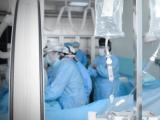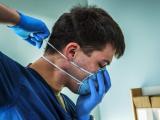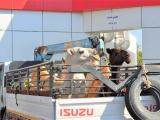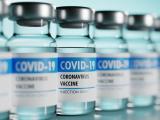Saudi Arabia's ministry of health (MOH) reported two new MERS-CoV cases over the weekend, and the World Health Organization (WHO) issued an updated risk assessment for the virus, its first since July 2015, noting that experts are still deeply concerned about continuing healthcare spread, though the outbreaks are smaller and stopped relatively quickly.
In other Middle East respiratory syndrome coronavirus (MERS-CoV) developments, South Korean researchers recently published their analysis of transmission patterns during the country's large hospital outbreak, which showed a connection between super-spreading events, doctor shopping, and emergency department visits.
MERS sickens two more Saudis
One of the new cases involves a 59-year-old Saudi man from Mahayel Aseer, located in the southwestern corner of the country, who became ill after direct contact with camels, the MOH said on Dec 10. The man is listed in stable condition.
The other newly reported patient is a 64-year-old Saudi woman from the central Saudi Arabian city of Buraidah who had primary exposure to MERS-CoV, meaning she probably didn't contract the virus from another patient. The woman is hospitalized in critical condition.
Also in disease updates over the weekend the MOH announced three more deaths in previously announced cases. All are middle-age to older adults who had pre-existing health conditions.
The developments boost Saudi Arabia's total from MERS-CoV to 1,506 cases, 625 of them fatal.
WHO: hospital outbreaks more frequent but smaller
The WHO said since its last MERS-CoV risk assessment in July 2015 that only one new country—Bahrain—has reported a case. Over the 17-month time period, 473 new illnesses were reported to the WHO, most of them from Saudi Arabia. These recent cases have largely been associated with transmission in healthcare settings, and camel exposure.
Overall, the epidemiology and transmission patterns haven't changed, with repeated spillovers from camels to people, with men older than 60 with underlying health conditions at the greatest risk for illnesses and severe disease. Experts noted improvements in the investigation of community-acquired cases, which has included testing camel herds near where human infections were found.
Since the last risk assessment, hospital-related outbreaks have become more frequent, but are generally smaller in size and sometimes involve several hospitals, according to the report. Healthcare-related outbreaks been reported in several Saudi Arabian cities, including Riyadh and Medina, which seem to have been stopped quickly with the implementation of infection prevention and control steps. The group noted that one such recent outbreak occurred in Riyadh in June, in which most cases were asymptomatic and identified through rapid contact tracing of healthcare and household contacts.
Such outbreaks aren't unexpected, but they are worrisome, because MERS-CoV is still a relatively rare disease that medical teams may not recognize, the group wrote. Early cases in healthcare setting can sometimes trigger large numbers of secondary cases among healthcare workers and patients. They said it's still not clear what exposures fuel transmission in health settings or what the role of environmental contamination may play.
They warned that until more is known about the mode of transmission and risk factors for infection, zoonotic cases that spark limited household transmission and possibly significant hospital-linked outbreaks are likely to continue, requiring consistent use of infection prevention and control steps.
South Korean hospital spread analysis
In research developments, South Korean scientists who studied the characteristics of people who transmitted MERS-CoV during a large hospital outbreak in 2015 found that of 186 cases, only 22 people passed the virus to other people. Five super-spreading events led to 150 illnesses. The team published its analysis on Dec 10 in an early online edition of Clinical Infectious Diseases.
Compared to nonspreaders, spreaders had higher host infectivity, along with wider and prolonged contacts. Super spreading events were marked by a larger number of contacts—approximately 10-fold higher—and a pre-isolation emergency department visit.
Doctor -shopping, thought to play a unique role in the rapid expansion of South Korea's outbreak, seems to create conditions suitable for super spreading events, with investigators noting that four of five patients identified as super spreaders transmitted the infection at two or more hospitals. "Therefore, strict ER triage and minimizing doctor-shopping during an outbreak’s early stage may help prevent super-spreading events," they wrote.
See also:
Dec 10 Saudi MOH update
Dec 11 Saudi MOH update
Dec 5 WHO MERS risk assessment
Dec 10 Clin Infect Dis abstract





















